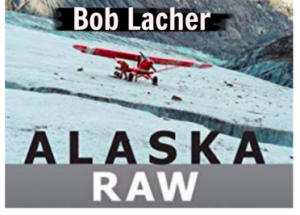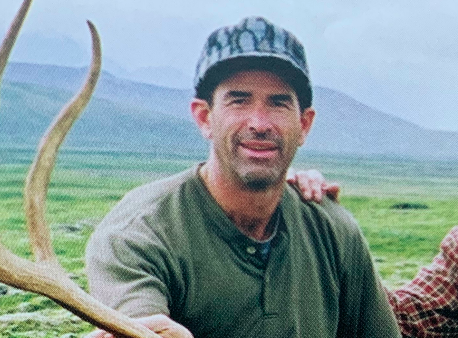SITUATION NORMAL: BEHEADING THE CARCASS
When we last heard from Bob Lacher, a fellow pilot who accompanied him on the trip had just suffered a bad beach landing and they have a damaged aircraft to deal with. This is part 3 of the 8-part serial of Chapter 1 of Lacher’s new book, which can be purchased at the links below.
After some time collecting Frank’s rattled ego and focusing on the problem, we got out all the tools we thought necessary to do the required body work. We did not have many.
It takes some amount of resolve to finally decide you are going to attack a near new $125,000 aircraft with a Leatherman, a crescent wrench, a small sledge hammer (brought to drive tent stakes)and an ax.
But once it had been decided, we went to work like a cluster of Bangladeshi rickshaw repairmen.
Soon we had the offending sheet metal hacked off, the bent tip surfaces hammered into rough shape, and space freed up for the aileron to move up and down again.

The aileron was bent up about 30 degrees and kinked. Once we made space for it to move within the wing, it was still crippled because of the range limitations and interferences caused by the kink. The big hammer was just bouncing off the bound up metal. The noises from each blow sent shudders rippling through what was left of Frank’s bruised disposition.
There was nothing left to do but perhaps get up on top of the wing and jump on it. That seemed rude. I finally tried a chin up, grabbing the end of the aluminum section and reefing down with all my weight. It finally started to come into shape. A few more reps of that and we were able to swing it through the full range of motion.
We face-checked each other for full approval and satisfaction.
In flight, it clearly would pull to the left, but we all agreed it should fly. In fact it might fly reasonably well. After another cigarette and more jaw jacking about how fortunate we were, the conversation finally got back to the dead walrus that was half in the water, half out, just a hundred yards away.
We were for sure going to cut its head off. Nothing would be more humiliating than wrecking an airplane and getting nothing. The act of beheading would begin the man-healing process. We rounded up the tools for the task, big ax, bone saw, serrated long-bladed Cutco knife, rubber gloves, hip boots and long rain jackets to shield us from the putrid splatter of magnificently rotten walrus goo.

Our trip plans were seeing some daylight again. The plane looked airworthy and the walrus was about to receive serious neck surgery. Given all of that, it seemed like it was about the right time to drag out into the open the notion we had all been thinking about since the Great Mistake: If the plane flew reasonably well, did Frank have the appetite for limping on down to Unimak and completing the trip?
What was unthinkable several hours ago was now thinkable, at least to me. I threw it out there. My father’s response was to give me his best confused and disoriented look like he misunderstood what I said, like maybe if he ignored the crazy street person who was smelling of urine and asking for spare change….he would eventually escape his piercing stare.
Frank, apparently all jacked up on the fetid fumes of the nearby rotten walrus, did not take long to agree, at least to the concept. With an introspective tilt of his head he mumbled something about “if it flew, why not finish what we started?” This would be easy. If it pulled to the left, just steer more to the right, like a car with a low tire. The structural analysis was completed with confidence and, even more amazingly, without any beer.
Nods of affirmation were being exchanged and re-exchanged all around. Let’s do this!
All further issues would be worked out during the test drive. Dad was slowly coming around to our position to keep the venture on schedule and we set about soothing disrupted feelings and jangled nerves by acting normal and beheading the walrus.
It was a dandy. Half of the animal’s head had been buried in the sand and the tusks were bigger than previously scouted from the air. It was an hour and a half long job since Frank wanted the entire skull to clean and mount, rather than just the tusks.
Incoming tidal breakers were rolling the 3,000 pound carcass up and down the inclined beach like a massive beach ball caught in the surf. We’d make a few cuts in the three inch thick neck hide while standing in three foot deep water, trying to time the waves so we could run back up the bank each time a big one came in and swamped the operation.
Back and forth, cut, slash, hack, chop, hack…outrun the incoming wave…follow the outgoing sea back out, jump on it again and repeat. The blood and snotty decomposed flesh swirled in fetid pools around us. Thigh deep in the cold surf and bathing in the revolting stench, we cannibalized the huge head off the body and dragged the prize up on shore. We felt back in charge.
Both airplanes were loaded to near capacity given the fuel we still had, so we decided to stash the head well up the bank in some tall grass, marking it with a GPS and brightly colored flagging to allow retrieval on the home bound trip. Frank and I cleaned up and sacked and sealed our bloody, rancid clothes and gloves in big garbage bags and loaded for the flight further south.
After liftoff, some back and forth on the radio between us confirmed the Maul was flying well enough. It would be a couple hundred more miles to get to Unimak and I was hoping to get another walrus head, or even better, a couple more.
We got back into the low level, throttled-back flight pattern along the ocean’s edge and picked our way down the beach at just 100 feet elevation.
Although we did not find another walrus head to harvest, we did find a spot where several hundred walrus were hauled up on a sandy shore to build up some body heat and take a break. There was a beach area several hundred yards away that appeared flat enough to get the planes landed on and we decided to stop and take a closer look. These were a batch of mature bulls and weighed 2,500 to 3,000 pounds. Stacked shoulder to tail, flashing long ivory tusks. They clearly did not see us as predators and didn’t get the least bit agitated about getting visitors.
The smell made our eyes water and throats burn, the bitter fumes of ammonia in their excrement was not just really unpleasant as in a humid, confined chicken coop or the worst corner of a dirty barn, it was physically overpowering, seizing your lungs if you got a big hit of it straight in. After a good half hour break and a snack and taking a round of pictures, we walked back up the beach to the airplanes and continued on.
The next stop would be Cold Bay, a place to regroup, fuel up and possibly stay overnight.
The wind was picking up. What had been 25- to 30-mph was now 35 to 40 and spitting rain harder than when we began. It’s difficult to keep a small aircraft parked and stationary in wind over 35 mph unless you can find a washed up log or heavy brush to tie it down to or unless you drive your own earth anchors, which we carried with us but were a pain to install and remove. If it did not slow down we thought it may be best to overnight in Cold Bay and see what the next day brought.
Mile after mile of black sand came and went. The winds continued sharply. When we finally arrived in Cold Bay there was no question the best plan would involve finding a tie down and waiting out the weather. A quick check revealed the winds were to slow to 25 or 30 mph by the next morning and stay that way for at least one day.
Come back on June 9 for the next installment, Part 4: A night in the Cold Bay ‘hotel’, and beach landing in a howling gale.
[Read Chapter 1, Part 1: A caribou hunt with my father, Unimak Island, 2004]
[Read: Part 2: No way to land an airplane]
Find this book at Barnes & Noble, Todd Communications, Title Wave Books, Once in a Blue Moose, and Amazon.

I now have the whole book. What is so interesting in this Chapter One is true throughout. Hunting is a small part of the journey. It is the thread that strings together all the various events and yet the trip is so much more, it is the outrageousness of the adventure that truly grabs you. The writing is totally engaging yet it is the material… where it takes place, how it all unfolds and what it feels like to be there… is described in such a remarkable fashion. I’ve never read anything like it. One could call it Classic Alaska but with a twist.
DD
This is damn good writing. I’m buying the book tomorrow.
Comments are closed.